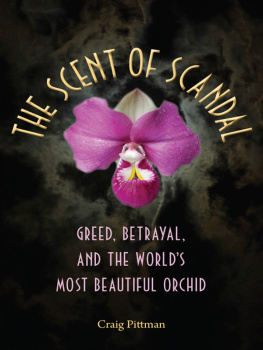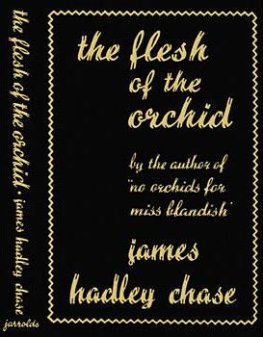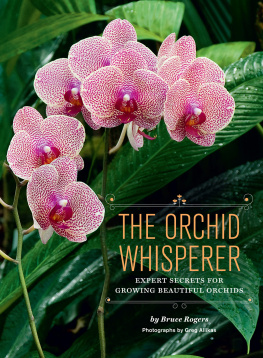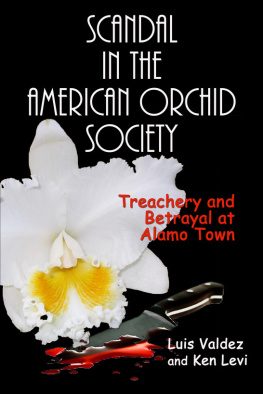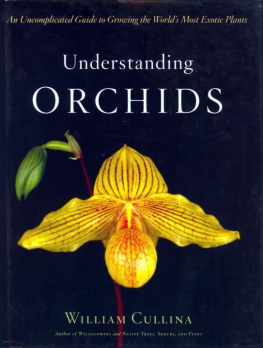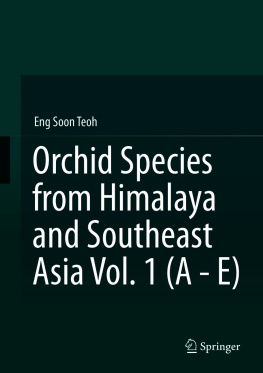Craig Pittman is an award-winning environmental reporter for St. Petersburg Times. He is the author of Manatee Insanity: Inside the War over Florida's Most Famous Endangered Species, and coauthor, with Matthew Waite, of Paving Paradise: Florida's Vanishing Wetlands and the Failure of No Net Loss. He lives in St. Petersburg with his wife and two children.
Acknowledgments
No author writes alone. My primary thanks go, as always, to my wife, Sherry, who for months on end put up with orchid books and court files scattered from the dining room table to the bedroom floor, and listened without eye- rolling as I prattled on about international endangered species law.
My heartfelt gratitude also goes to Gisella Canepa-Bosco for her crucial work translating documents and even video from Spanish into English. Without her help, this book would lack some of its most important details.
I was greatly aided by a number of my colleagues at the St. Petersburg Times. My editor, Roy LeBlanc, graciously read the manuscript and suggested ways to improve its flowso you, dear reader, should thank him too. Caryn Baird, the Indiana Jones of document research, dug up all sorts of valuable background material for my initial stories, which benefited the book version immensely. Artist Don Morris updated and expanded the map that ran in the newspaper to better suit this book's ambitions. Paul Jerome, whose technical savvy is exceeded only by his patience, provided me with some badly needed help in dealing with the photos and video. As always, I owe a tremendous debt to editor Neil Brown for granting me permission to plumb the resources of Florida's largest newspaper, as well as to my attorney, Alison Steele, whose advice is worth its weight in gold (which, fortunately, is not the way she bills).
My thanks go to orchid experts extraordinaire Paul Martin Brown and Scott Stewart, who vetted this manuscript for accuracy. If I have still blundered into errors, that's my fault, not theirs. Documentary filmmaker Rich Walton helped me in ways too weird to recount. The folks at the University Press of Florida were wonderful, as always, especially Meredith Morris- Babb, Catherine-Nevil Parker, Susan Murray, Dennis Lloyd, and Stephanie Williams.
Finally, I must give a special shout-out to Boy Scout Troop 305 and Scoutmaster Tim Bulu. They tolerated me dragging a laptop along and working on this book during our summer camp in Georgia. Despite the scorpions, skunks, and blistering heat, our campsite proved to be the ideal place to get a lot of writing done. The lack of any Internet access or cell phone service may have had something to do with it.
July 2011
Selected Bibliography
Bean, Michael, and Melanie Rowland. The Evolution of National Wildlife Law. Westport, Conn.: Praeger, 1997.
Berliocchi, Luigi. The Orchid in Lore and Legend. Translated by Lenore Rosenberg and Anita Weston. Portland, Ore.: Timber Press, 1996.
Box, Ben, and Alan Murphy. Footprint Peru Handbook. Bath, U.K.: Footprint Handbooks, 2003.
Chadwick, A. A., and Arthur E. Chadwick. The Classic Cattleyas. Portland, Ore.: Timber Press, 2006.
Conover, Ted. The Routes of Man: How Roads Are Changing the World and the Way We Live Today. New York: Knopf, 2010.
Darwin, Charles. On the Various Contrivances by Which British and Foreign Orchids Are Fertilised by Insects, and on the Good Effects of Intercrossing. London: John Murray, 1862.
Fara, Patricia. Sex, Botany, and Empire: The Story of Carl Linnaeus and Joseph Banks. New York: Columbia University Press, 2003.
Grismer, Karl H. The Story of Sarasota. Sarasota, Fla.: M. E. Russell, 1946.
Hansen, Eric. Orchid Fever: A Horticultural Tale of Love, Lust, and Lunacy. New York: Pantheon Books, 2000.
Koopowitz, Harold. Orchids and Their Conservation. Portland, Ore.: Timber Press, 2001.
. Tropical Slipper Orchids: Paphiopedilum and Phragmipedium Species and Hybrids. Portland, Ore.: Timber Press, 2008.
Lasky, Kathryn, and Christopher G. Knight. The Most Beautiful Roof in the World: Exploring the Rain Forest Canopy. New York: Harcourt Brace, 1997.
Lowman, Margaret D. Life in the Treetops: Adventures of a Woman in Field Biology. New Haven: Yale University Press, 1999.
Lowman, Margaret D., Edward Burgess, and James Burgess. It's a Jungle Up There: More Tales from the Treetops. New Haven: Yale University Press, 2006.
Luer, Carlyle A. The Native Orchids of Florida. New York: New York Botanical Garden, 1972.
McDonald, James. Wordly Wise. New York: Franklin Watts, 1985.
Motes, Mary. Orchid Territory. Petaluma, Calif.: Woodrunner, 2006.
Nolan, David. Fifty Feet in Paradise: The Booming of Florida. New York: Harcourt Brace Jovanovich, 1984.
Orlean, Susan. The Orchid Thief. New York: Random House, 2000.
Reinikka, Merle A. A History of the Orchid. Coral Gables, Fla.: University of Miami Press, 1972.
Short, Philip. In Pursuit of Plants: Experiences of Nineteenth and Early Twentieth Century Plant Collectors. Portland, Ore.: Timber Press, 2003.
Starn, Orin, Carlos Ivan Degregori, and Robin Kirk, eds. The Peru Reader: History, Culture, Politics. Durham, N.C.: Duke University Press, 2006.
Stout, Rex. Black Orchids. New York: Pyramid Books, 1941.
Stuart, David. The Plants That Shaped Our Gardens. Cambridge: Harvard University Press, 2002.
Train, Russell. Politics, Pollution, and Pandas: An Environmental Memoir. Washington, D.C.: Island Press, 2003.
Van der Pijl, L., and Calaway Dodson. Orchid Flowers: Their Pollination and Evolution. Coral Gables: University of Miami Press, 1966.
Wehner, Ross, and Renee del Gaudio. Moon Peru. Emeryville, Calif.: Avon Travel, 2007.
Wilson, Edward O. The Diversity of Life. Cambridge: Belknap Press of Harvard University Press, 1992.

The Most Beautiful Party in Town
I never before realized that the story of a
botanical gardencould read as if it were
the drama of a pulp crime novel.
Margaret Meg Lowman, It's a Jungle Up There
As the party swirled around her, Meg Lowman had no idea how much peril she was about to face. She believed she had climbed to the pinnacle of success.
Actually, she was standing on a precipice.
The soiree Lowman was presiding over on this warm spring evening, the annual Orchid Ball, had a reputation as Sarasota's biggest black-tie event. The local newspaper's society columnist had dubbed it the most beautiful party in Sarasota. It was also Selby Gardens' biggest fund-raiser. The staff worked on it for months, figuring out how to feed and entertain hundreds of wealthy and well-connected people, coaxing them to pull out their wallets.
Since it was an outdoor event, intended to showcase the gardens as well as put the attendees in a giving mood, the weather conditions had to be dry. Sometimes it had been cold enough to prompt the women to get their furs out of storage. Sometimes it had been so hot that no one wanted to dance or even move around. But always, for nineteen years, the ball had remained precipitation-free. It became something of a joke among the employees: Marie Selby would never let it rain on the Orchid Ball!
But on the ball's twentieth anniversary in 2001, the ghost let them down. Just as the guests arrived, the skies opened up and rain fell in cold sheets. The Selby staff, many of them clad in kimonos in keeping with the theme of Under an Asian Moon, splashed through the mud to set up tents over the tables.
In 2002, though, the ghost of Marie Selby was apparently back on the job. The
Next page
